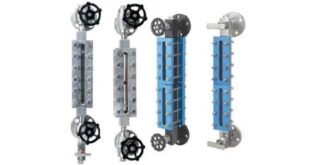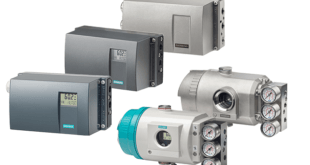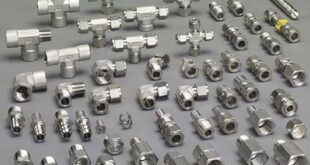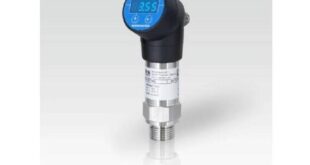What is the flow transmitter or flow transmitter and how does it works?
Flow transmitters are precise devices that provide electrical outputs corresponding to flow inputs. Flow transmitters use flow meters to measure the flow of liquids and gases. Flow transmitters use three main types of measurement: mass, volumetric, and velocity.
Measuring technology
Flow transmitters use several sensing technologies, including differential pressure (DP). The operational basis of differential press. measurement is that the pressure drop across a gauge is proportional to the square of the flow rate. Examples of DP meters include orifice plates, conical devices, Pitot tubes, Venturi tubes, and flow nozzles.
Orifice plate
Orifice plates restrict fluid flow to create a pressure difference across a flat piece of metal that contains a flanged hole.
Cone-based device
Cone-based devices place a cone in the center of the fluid flow to create a differential pressure proportional to velocity.
Pitot tubes
Pitot tubes are a pair of hollow tubes. One tube measures the contact pressure and the other tube measures the potential.
Venturi tubes
Venturi tubes gradually narrow the diameter of a flow tube and measure the resulting pressure drop.
Flow nozzles
Flow nozzles are similar to Venturi tubes, but do not provide an outlet area for pressure recovery.
Measurement techniques
Flow transmitters use positive displacement (PD) techniques, true mass flow, electromagnetic, ultrasonic and other measurement techniques.
- PD equipment divides liquids into specific increments that are counted by mechanical or electronic methods. Examples of PD meters include piston meters, oval gear meters, nutating discs, and rotameters.
- True mass meters measure flow in terms of mass and include devices such as heat meters and Coriolis meters.
- Ultrasonic meters include Doppler and time-of-flight meters.
- Electromagnetic devices use liquid as a conductor, and a magnetic field is created by energized coils outside a flow tube.
- Elbow meters work on the principle that when the liquid moves in a circular path, centrifugal force is applied along the outer edges.
Specifications and features
Flow transmitters vary in operating conditions, flow range parameters, performance measurements, and optional features. Working conditions include maximum working pressure, fluid temperature range and working temperature.
Measured in pounds per square inch (psi), working pressure is the maximum head pressure that flow transmitters can withstand.
The fluid temperature range is a function of the liner and construction material, usually measured in degrees Fahrenheit. However, metric devices are commonly available. Flow range parameters for flow transmitters include velocity flow rate range, volume flow rate range and mass flow rate range.
Mass flow rate is the range of mass flow in time. The specification applies to flow sensors and flow measurements.
The flow rate range is the range of flow in distance over time. This specification applies to speed flow meters and sensors.
The gas volume flow rate range is the range of flow in volume over time. This specification applies to volumetric flow sensors and meters related to gases.
Performance Measurement
Contains the maximum pressure drop for fluids passing through the device. The performance of a meter can be determined according to its turn down ratio. Turn down ratio is the effective dynamic or operating range of the flowmeter. For example, if a 500 SCCM flow rate device has a 50:1 Turndown. It works efficiently and handles flow up to 10 SCCM. If the same device has a vertical ratio of 100:1, then it effectively resolves up to 5 SCCM.
In general, the type of flow meter or flowmeter determines the features available. Some flow transmitters can measure temperature or density. Others measure the level of liquids.
Flow transmitter output options
Outputs of current transmitters include analog voltages, analog currents, frequencies, and pulses
Analog voltage output is simple and usually linear. They are more continuous than pulsed or discrete.
Analog current outputs are suitable for sending signals over long distances. They include current loops such as 4-20mA and use feedback to provide a suitable current regardless of impedance or noise.
The frequency and pulse signal output is encoded through amplitude modulation (AM), frequency modulation (FM) and pulse width modulation (PWM). They are also expressed as sine waves and pulse trains. Some flow transmitters are inserted perpendicular to the flow path and require a perforated tube for access. The rest are placed parallel to the flow patch between the two pieces of process pipe and placed in place.
standards
Debugging transmitters must adhere to certain standards to ensure proper design and performance.
AD 63-09-01 – Fuel flow transmitters
MIL-T-26298 – Transmitters and flow rates
 Ontrose industrial corporation Inc. Engineering and supply of industrial projects
Ontrose industrial corporation Inc. Engineering and supply of industrial projects






